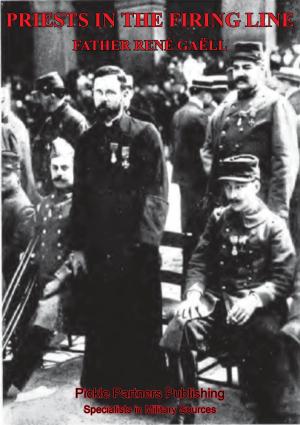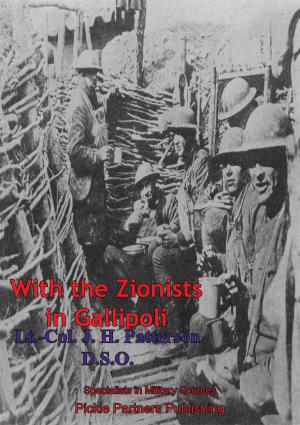St Lô (7 July - 19 July, 1944) [Illustrated Edition]
Nonfiction, History, Germany, European General, Military, United States| Author: | Anon. | ISBN: | 9781782892502 |
| Publisher: | Lucknow Books | Publication: | June 13, 2014 |
| Imprint: | Lucknow Books | Language: | English |
| Author: | Anon. |
| ISBN: | 9781782892502 |
| Publisher: | Lucknow Books |
| Publication: | June 13, 2014 |
| Imprint: | Lucknow Books |
| Language: | English |
Includes 54 contemporary photos illustrations and 26 highly detailed maps.
ST-LÔ, capital of the department of Manche, can be used as one symbol for First U. S. Army’s victory in a most difficult and bloody phase of the Campaign of Normandy: the "Battle of the Hedgerows," during the first three weeks of July 1944. Other names figure in this battle. La Haye-du-Puits, Périers, Hill 192, like St-Lô, will be remembered by First Army soldiers from a background of stubborn struggle for gains too often measured in terms of a few hundred yards, or of two or three fields, conquered against a bitterly resisting enemy.
Much more was at stake in the Battle of the Hedgerows than possession of a communications center on the Vire River. In June, First Army and British Second Army had won their beachheads and had captured Cherbourg (26 June). Supplies and reinforcements were building up for a powerful offensive, designed to break out of the Normandy pocket and scheduled to be mounted in the First Army zone. But more room and better jump-off positions for the crucial offensive were needed before this blow could be delivered. The attack that began in early July was planned to gain this ground, on a front of 25 miles. Four corps, employing ultimately 12 divisions, were involved in the effort. All these units faced similar problems of advance, and all contributed to the measure of success achieved. Therefore, in the larger tactical sense it would be unfair to identify the Battle of the Hedgerows with St-Lô and later military studies, treating the Campaign of Normandy in different scope, will give the operation in truer proportions. Here, one phase of the hedgerow battle can be used to illustrate, in tactical detail, the character of the larger action.
A gripping account of the attempts by the Allies to break out from the Normandy bridgehead.
Includes 54 contemporary photos illustrations and 26 highly detailed maps.
ST-LÔ, capital of the department of Manche, can be used as one symbol for First U. S. Army’s victory in a most difficult and bloody phase of the Campaign of Normandy: the "Battle of the Hedgerows," during the first three weeks of July 1944. Other names figure in this battle. La Haye-du-Puits, Périers, Hill 192, like St-Lô, will be remembered by First Army soldiers from a background of stubborn struggle for gains too often measured in terms of a few hundred yards, or of two or three fields, conquered against a bitterly resisting enemy.
Much more was at stake in the Battle of the Hedgerows than possession of a communications center on the Vire River. In June, First Army and British Second Army had won their beachheads and had captured Cherbourg (26 June). Supplies and reinforcements were building up for a powerful offensive, designed to break out of the Normandy pocket and scheduled to be mounted in the First Army zone. But more room and better jump-off positions for the crucial offensive were needed before this blow could be delivered. The attack that began in early July was planned to gain this ground, on a front of 25 miles. Four corps, employing ultimately 12 divisions, were involved in the effort. All these units faced similar problems of advance, and all contributed to the measure of success achieved. Therefore, in the larger tactical sense it would be unfair to identify the Battle of the Hedgerows with St-Lô and later military studies, treating the Campaign of Normandy in different scope, will give the operation in truer proportions. Here, one phase of the hedgerow battle can be used to illustrate, in tactical detail, the character of the larger action.
A gripping account of the attempts by the Allies to break out from the Normandy bridgehead.
![Cover of the book St Lô (7 July - 19 July, 1944) [Illustrated Edition] by Anon., Lucknow Books](https://www.kuoky.com/images/2014/june/500x500/9781782892502-d54q_500x.jpg)






![Cover of the book In The Northern Mists; A Grand Fleet Chaplain’s Note Book [Illustrated Edition] by Anon.](https://www.kuoky.com/images/2015/november/300x300/9781786255365-e12R_300x.jpg)
![Cover of the book Guymeyer — The Ace Of Aces. [Illustrated Edition] by Anon.](https://www.kuoky.com/images/2012/april/300x300/9781782890812-oKhD_300x.jpg)



![Cover of the book Rommel’s Desert Campaigns, February 1941-September 1942: A Study In Operational Level Weakness [Illustrated Edition] by Anon.](https://www.kuoky.com/images/2014/august/300x300/9781782894216-IQzb_300x.jpg)


